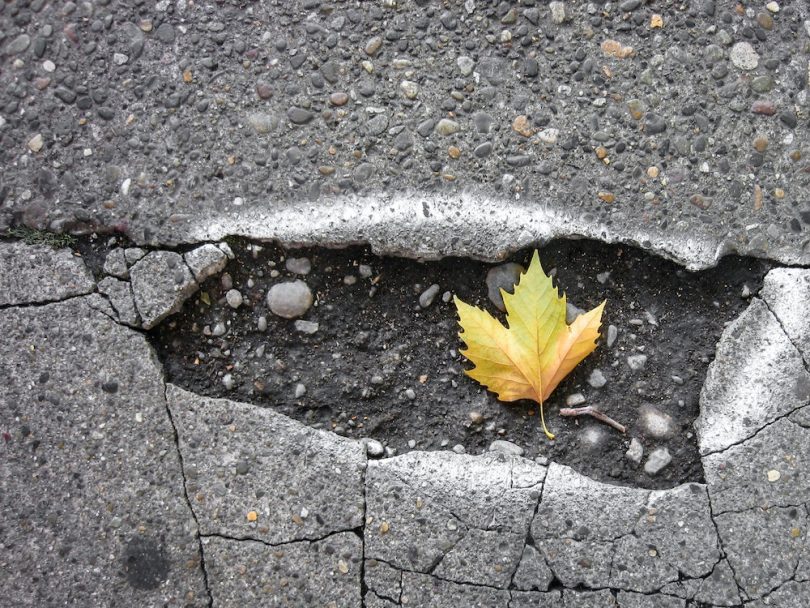[ad_1]
Heading into the December holiday period, we can expect to hear a lot of advice about ensuring that our cars are road-trip ready for the journeys that many of us will take.
There’s no doubt that every motorist needs to ensure their vehicle is safe. By law, you also cannot drive in an unroadworthy vehicle in South Africa.
However, there is growing danger in our driving lives that entails the progressively deteriorating state of our roads. And it begs the question: shouldn’t we be placing more emphasis on our roads being car-worthy?
According to the South African Roads Federation (SARF), the number of potholes in South Africa has ballooned in the last five years from 15 million to 25 million.
Potholes are not just a nuisance – they can be fatal.
Crash course on potholes
Roads need to be continuously and adequately maintained to prevent what is known as porosity from infiltrating and deteriorating the road surface. Over time, every road naturally becomes more porous with use.
But regular and proper maintenance should go a long way in reducing this porosity from escalating into potholes.
This maintenance needs to be consistent to ensure that potholes are limited. What makes this challenging in South Africa is that there is often a lack of funding and proper provision in terms of maintenance. Growing volumes of heavy-loaded trucks traversing our country have also made the situation worse.
So, how do we fix this problem?
Taking a step back, there are two potential ways we can start to go about addressing the state of our roads in South Africa. These chiefly include: developing an integrated infrastructure master plan, and utilising real time monitoring tools such as digital twins as well as road asset management services technologies.
Integrated master plan
As the starting point, government should have a cohesive and integrated infrastructure master plan in place — whether that takes the form of the current National Development Plan (NDP) or even a newly updated initiative.
A key aspect of this plan should seek to create greater cohesion among South Africa’s road, rail and ports infrastructure in order to drive up efficiencies, and protect the state of our roads.
The Minister of Finance, Enoch Godongwana, in his recent mini-budget speech highlighted how “several steps are being taken to introduce greater competition and efficiency into ports and rail”. Privatisation and regulated third-party access to the rail network were further mentioned by the minister. This is a step in the right direction and it will not only improve the efficiency of South Africa’s logistics sector, but it will potentially take thousands of trucks off our roads and thereby ensure that there is less wear and tear, and, ultimately, fewer potholes. Transnet has already set itself a goal of transporting 60 million tons (Mt) of coal in its current financial year.
With an integrated plan, government could also apportion certain roads purely for trucks, thereby managing the wear and tear better.
Digital Twins, Road Asset Management tech
An integrated plan is one part of the solution. Another key measure involves taking a closer look at how we monitor and manage the state of our road infrastructure. Here, technology can play a key role.
A first solution to achieving a better level of monitoring is by using a technology called ‘Digital Twins’. A Digital Twin is a digital replica of physical assets, such as buildings, roads and much more. By sharing data between the virtual and real-world environment; governments and key stakeholders can pre-empt issues through proactive maintenance.
In a Digital Twin application, engineers could install sensors and cameras along a stretch of road to monitor, for example, the load on the road, the traffic and any emerging potholes. Engineers then use this information to build an accurate digital replica of the existing system that can help to predict and manage demand and implement just-in-time maintenance.
All of this can help our towns and cities save money by managing their existing road infrastructure in a far better way. More cities around the world — such as Singapore — are using Digital Twins extensively for purposes such as these.
At Royal HaskoningDHV Southern Africa, we have also successfully rolled out Road Asset Management Services (ZA-RAMS) as part of pilot projects in the likes of the North-West. ZA-RAMS is an integrated planning tool that collects, stores, and presents road data to help municipalities extend the life of their assets through better maintenance planning.
It does this by giving decision makers access to real-time road network information, allowing them to prioritise the road maintenance budget. It also helps municipal managers with compiling their own reports and assessing, in real-time, the state of roads. All of this can be done via tablet devices, making the technology mobile.
All in all, the know-how and tools exist to improve the state of our roads and to ensure that they keep our economy ticking over. We can reduce the number of potholes on our roads, and make our roads more car-worthy, if we collectively come together and seek to solve this problem.
Bongani Mthombeni-Möller is the Director of Smart Mobility at Royal HaskoningDHV. Royal HaskoningDHV is an independent, international engineering and project management consultancy with 140 years of experience and 6,000 colleagues across the globe.
[ad_2]
Source link








